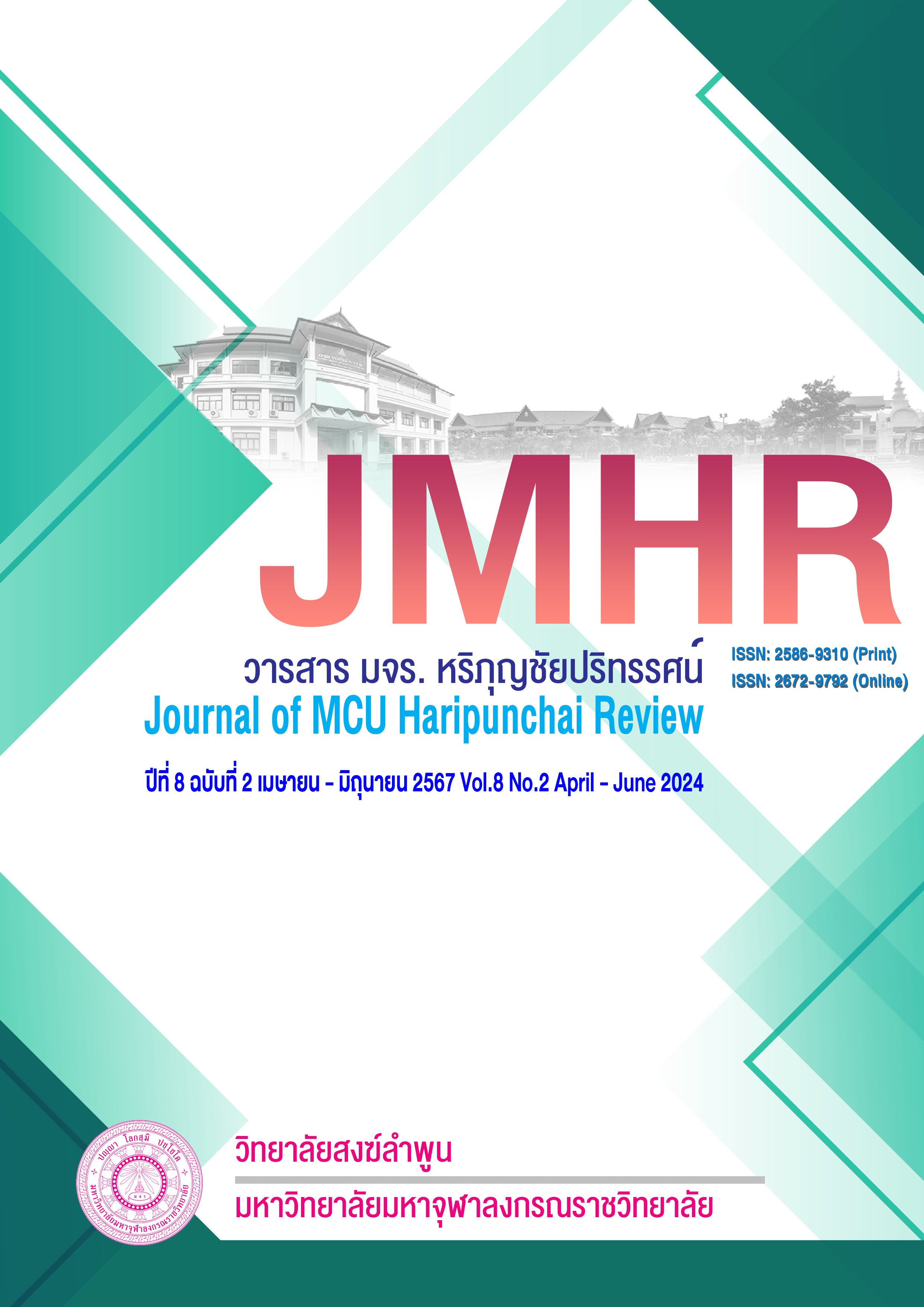Changes in the propagation of Buddhism by monks in the New Normal era
Main Article Content
Abstract
This article aims to analyze aspects of the new lifestyle change or New Normal of Buddhist monks that occurred after the COVID-19 crisis (COVID-2019) had spread widely and caused More deaths and the leaders of each country to take measures to prevent it. Including formatting in life with a different form, such as a change in the form of social coexistence educational change occupational change cultural changes, etc., but when the world changes Buddhist monks who are religious leaders must change their roles to support the activities of the Sangha, especially the main tasks of more proactive work activities, namely: 1. Change and adaptation in education to have science Leapfrog research and innovation that affects the acceptance of the global society. and 2. Changes and adaptations in the propagation of Dharma, especially the use of technology in the form of online work and various media innovations to reach the target group easily, conveniently and quickly. Although there are many variations in the Buddhist propagation patterns of Buddhist monks in the New Normal era, the author will present only 2 issues because both of them are very important to the world today that is related. between each other and supporting the work roles of monks in the new era.
Article Details

This work is licensed under a Creative Commons Attribution-NonCommercial-NoDerivatives 4.0 International License.
References
กระทรวงอุตสาหกรรม. (2559). ยุทธศาสตร์การพัฒนาอุตสาหกรรมไทย 4.0 ระยะ 20 ปี (พ.ศ. 2560-2579). กรุงเทพมหานคร: กระทรวงอุตสาหกรรม.
พระมหาจักรพล สิริธโร. (2563). การเผยแผ่พุทธศาสนาในยุคไทยแลนด์ 4.0. วารสารสถาบันวิจัยญาณสังวร 11 (1) :
ธนิพร จูลศักดิ์. (2555). การเผยแผ่ธรรมะผ่านสื่อสังคมออนไลน์ของพระมหาวุฒิชัย วชิรเมธี. มหาวิทยาลัยธุรกิจบัณฑิตย์.
พระครูนนทมงคลวิศิษฐ์. (2559). พระสงฆ์กับบทบาทการพัฒนาสังคมที่เปลี่ยนแปลงไปตามยุคสมัย. วารสาร มจร การพัฒนาสังคม, 1(2), (พฤษภาคม – สิงหาคม) : 20 - 31.
พระมหาจักรพล สิริธโร. (2563). การเผยแผ่พุทธศาสนาในยุคไทยแลนด์ 4.0. วารสารสถาบันวิจัยญาณสังวร. 11 (1), (มกราคม – มิถุนายน) : 80)
พระพงษ์พัฒน์ วิจิตฺตธมฺโม, วันชัย สุขตามและจิรายุ ทรัพย์สิน. (2563). บทบาทของพระสงฆ์ในยุค 4.0 : กรณีศึกษาคณะสงฆ์ในเขตเทศบาลเมืองสุรินทร์ จังหวัดสุรินทร์. วารสารการบริหารการปกครองและนวัตกรรมท้องถิ่น. 4 (1), (มกราคม-เมษายน) : 1 – 14.
พระเมธีธรรมาจารย์. แนะพระสงฆ์ปรับวิธีให้บริการธรรมะรับมือโควิด 19. เดลินิวส์: 2564.
พระครูอุทัยพัฒนโกศล (ฉลอง กุสโล). (2559). บทบาทคณะสงฆ์กับการศึกษา. วารสารครุศาสตร์ปริทรรศน์ คณะครุศาสตร์ มหาวิทยาลัยมหาจุฬาลงกรณราชวิทยาลัย. 3 (3), (กรกฎาคม-กันยายน) : 120-135.
เมธี เชษฐ์วิสุต. (2563). สื่อสังคมออนไลน์กับการเผยแผ่พระพุทธศาสนา. วารสารพุทธศาสตร์ศึกษา. 10 (2), (กรกฎาคม – ธันวาคม) : 521 – 531.
ศรุตานนท์ ชอบประดิษฐ์. (2563). วิกฤตโควิด 19 ส่งผลกระทบต่อการเปลี่ยนแปลงทางสังคมอย่างไร. วารสารชัยภูมิปริทรรศน์. 3 (2), (พฤษภาคม – สิงหาคม) : 1 – 14.
โอภาส การย์กวินพงศ์. (2363). Remote Working” วิถีใหม่ที่ช่วยบริหารองค์กรยุค New Normal.กรุงเทพธุรกิจ.
BBC Thai. เมื่อการเรียนการสอนต้องดำเนินต่อไป. [ออนไลน์]. แหล่งข้อมูล : https://www.bbc. com/thai/thailand [วันที่ 28 กรกฎาคม 2566].


